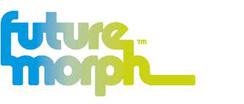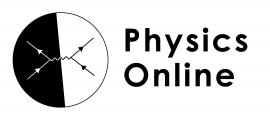The EM spectrum
Considering that light is just a small part of a much larger family of waves can really enhance this subject, particularly if there is a focus on some of the applications of these waves, such as in medical physics. Even so, other than light, these waves cannot be seen by humans directly and so it can be hard for students to imagine that they are there. For example, does something really come out of the end of a television remote control? It doesn’t look like it (the answer is yes, obviously, nice trick to show this coming up).
Many of the experiments that are carried out in schools in this topic relate to the behaviour of light. This is often simply because they are the easiest to find equipment for and carry out. This can lead to the idea that the behaviour observed (e.g. reflection, refraction) is that of light, not all electromagnetic waves. Where possible the behaviours should be shown with other electromagnetic waves or the connections made. An example might be that you can change the channels of a TV using an infra-red remote control that is pointed at a wall on the other side of the room. Point most digital cameras at the end of a remote control, push a button on the remote and you can ‘see’ that something is coming out the end.
This topic mainly focuses on visible light to learn the behaviour of the all waves in the spectrum. Students will have the opportunity to learn about lenses and optical arrangements. They will use ray diagrams, but won’t need to learn or use the equations.
Whilst this list provides a source of information and ideas for experimental work, it is important to note that recommendations can date very quickly. Do NOT follow suggestions which conflict with current advice from CLEAPSS, SSERC or recent safety guides. eLibrary users are responsible for ensuring that any activity, including practical work, which they carry out is consistent with current regulations related to Health and Safety and that they carry an appropriate risk assessment. Further information is provided in our Health and Safety guidance.
Image formation with a lens
This practical activity from the Institute of Physics is both fun for the students to carry out and easy for you to set up.
Dispensing Optics
This short video looks at several students following ophthalmic dispensing and contact lens courses. The students describe the work they are doing with lenses and how this relates to the science they learnt at GCSE level. It illustrates some of the career opportunities available in the eye care industry. Also included are some simple student activities, with accompanying teacher guidance, that illustrate how images are formed with lenses.
Medical Imaging *suitable for home teaching*
A Catalyst article about microwaves, infrared, ultraviolet and X-rays which are all electromagnetic waves. The article looks at their different uses and why some are used to create medical images and others to treat disease. The article also explores how the electromagnetic spectrum is used by medical physicists to create images of body organs.
Light Fantastic: the Science of Colour *suitable for home teaching*
Light fantastic is the Institute of Physics Schools and Colleges Lecture that was presented during 2007. The hour-long lecture is aimed at students aged 14 to 16 years but will also be of interest to older students. The lecture illustrates the importance of light and colour. It looks at the basic concepts of light and colour and shows how technology is making the most of light's astonishing properties. The show includes demonstrations and movie clips which help to explore the characteristics of electromagnetic radiation.
Black body radiation
A body in thermal equilibrium with its surroundings so that it both absorbs and emits EM radiation is new to GCSE. Thinking of a black stove which is both absorbing and emitting is a good start to picture what is meant by a black body. This simulation can be used to make things clearer. You will need to prepare before using it with your students, but together with your explanations, you can use it to illustrate that all bodies emit radiation and that the intensity and wavelength distribution of any emission depends on their temperatures.
Radar: seeing the unseen
This activity booklet uses the real life context of air traffic control using radar signals to identify the position of an aeroplane that students act out. It provides them with an opportunity to use their knowledge of waves and speed = distance / time to calibrate and calculate the distance a plane is from the radar. This will aid their working scientifically skill base as well as providing them with how physics is used day to day.
Reflection of light
This video demonstrates an investigation of reflection at a plane mirror. This is a required practical for students to be able to understand and carry out for GCSE Combined Science and Physics.
Refraction of light
A trio of videos that investigates the refraction of light through a transparent block. This first video allows students to see the experiment and the other two review the results and plot a graph to investigate the relationship between the incident and refracted angles. This is a required practical for students to be able to understand and carry out for GCSE Combined Science and Physics.
What is Light?
This video with supporting teacher guidance and student activity introduces 'light' as the electromagnetic spectrum and how an electromagnetic wave is made. It discusses the wavelength, speed and frequency of electromagnetic waves and how we can detect them. How light interacts with matter and the concept of red-shift are also introduced.






